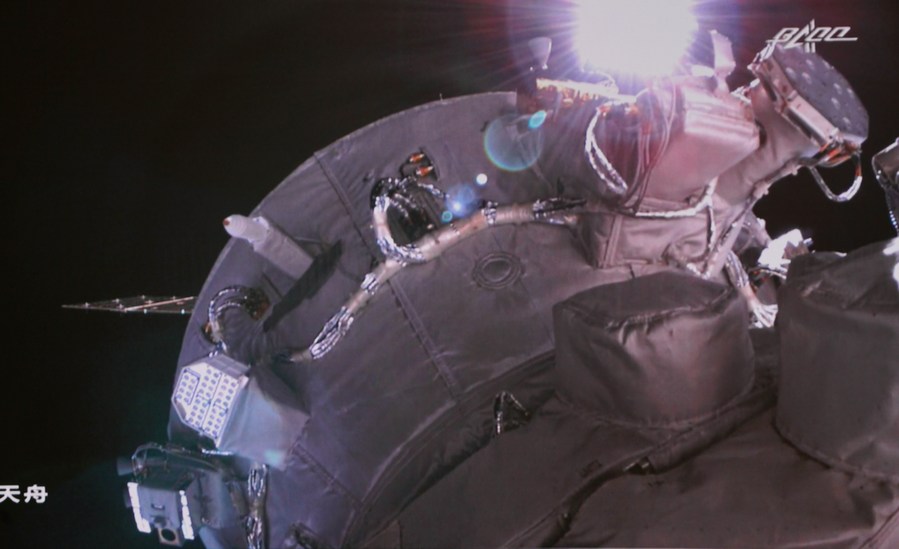
Photo taken on Jan. 6, 2022 at Beijing Aerospace Control Center shows the transposition test of the Tianzhou-2 cargo craft using its space station's robotic arm. (Xinhua/Guo Zhongzheng)
BEIJING, April 17 (Xinhua) -- The crews of China's Shenzhou-14 and Shenzhou-15 missions have been selected, and are carrying out relevant training and mission preparations, according to a press conference on Sunday.
Both crews will stay in orbit for six months, and they will for the first time rotate in orbit to realize the uninterrupted manned residence, Huang Weifen, chief designer of the China manned space program's astronaut system, said at the press conference.
The two crews, totaling six astronauts, will live together in orbit for five to 10 days.
The Shenzhou-14 crew will cooperate with ground control to complete the assembly and construction of the space station, and gradually develop it from a single-module space station into a three-module combination.
Huang said the Shenzhou-14 crew will enter the Wentian and Mengtian lab modules. They will also cooperate with ground control to carry out tests on the two-module complex, the three-module complex, the station's large and small mechanical arms, and the exit function of the airlock cabin in the lab modules, she said.
They will use the airlock cabin to carry out extravehicular activities for the first time.
Huang said the Shenzhou-15 crew will carry out several extravehicular activities; assemble, test and debug the payloads inside modules; and control the mechanical arms to install extravehicular payloads. They will also operate, manage and maintain the largest complex composed of three modules and three spacecraft.
The two crews will undertake science popularization and other public activities, in-orbit scientific research experiments and engineering technology tests, and will collect flight mission data.
They will also carry out in-orbit health monitoring, protective exercises, in-orbit training and drills, station platform inspections and tests, equipment maintenance, and station and material management, Huang said. ■



